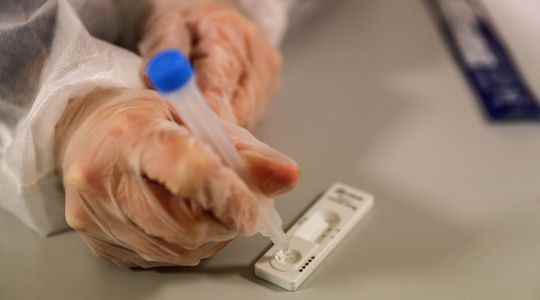SARS-CoV-2, which has been shaking the world since 2020, may not have finished surprising us. While several variants have sometimes undermined the immunity conferred by the different vaccines, a sub-variant of Omicron, the BA.2, casts doubt on the continuation of the epidemic.
If Omicron belongs to the B.1.1.529 lineage, it has indeed been divided since December 1 into two sub-lineages, BA.1 and BA.2. The first was found in more than 96% of positive tests, during the last Flash survey of Public health Francewhen only sixty sequences of BA.2 were identified, recall the health authorities in their latest epidemiological bulletin dated January 27.
Insufficient screening to distinguish subvariants
This minority presence in France partly explains why it is still difficult to measure its effects. Because for the moment, the means available to the country to clearly identify which infections are due to the BA.2 sub-variant are relatively limited. The screening strategy, which is based on the use of kits targeting a few mutations in particular, currently makes it possible to detect all the cases linked to Omicron but not to distinguish between the BA.1 or BA.2 sub-variants. Only the sequencing of the virus after a PCR test can differentiate these two strains. A relatively long operation, which can only be carried out for a limited sample of tests.
Between the last week of December and mid-January, however, SpF estimates the number of BA.2 infections at 9,900 compared to 3.6 million for BA.1. “The evolution of the proportion of BA.2 and knowledge about this sub-lineage will continue to be closely monitored over the coming weeks,” the agency points out.
The Danish case is particularly observed closely. The Scandinavian country observes a gradual replacement of the BA.1 by the BA.2 subvariant. “What surprised us was the speed with which this sub-variant, which has circulated a lot in Asia, settled in Denmark, epidemiologist Antoine Flahault told AFP. The country was expecting a peak. contaminations in mid-January; it did not occur and perhaps it is due to this sub-variant, which seems very transmissible but not more virulent” than the original variant.
Only one study exists
According to the first conclusions of a Danish study, published monday and not yet peer-reviewed, BA.2 would actually be more contagious than BA.1. The study, the only one to date on this sub-lineage, shows that “if someone in your household is infected with BA.2, there is an overall 39% risk that another member of the household will be infected. in the first week. On the other hand, if the person is infected with BA.1, the risk is 29%,” the Danish Infectious Diseases Control Authority (SSI) said in a statement.
“Unvaccinated people are also more likely to be infected with BA.2 compared to BA.1,” insisted Camilla Holten Møller, a doctor at SSI, quoted in the press release. Those who have received their injections, and in particular a booster, are much less likely to be infected, she noted.
On the hospital front, the sub-variant does not cause any particular concern for the moment. According to a previous press release published by the SSI, “initial analysis shows no difference in hospitalizations for BA.2 compared to BA.1.”
